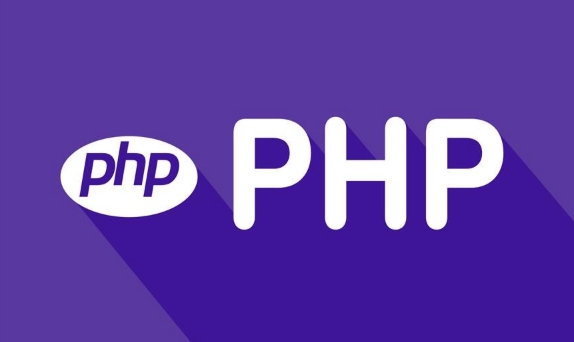PHP 8 introduces a number of important new features that significantly improve performance, code readability and development experience. 1. JIT compilation improves execution speed, especially for CPU-intensive tasks, and is controlled through php.ini configuration; 2. Union types support more flexible type declarations, allowing direct definition of multiple parameter types; 3. Named parameters enhance the readability and security of function calls to avoid order errors; 4. Match expressions provide a more concise condition return method than switch, with strict comparison and non-penetration characteristics; 5. Constructor attribute improvement reduces boilerplate code, making class definition more concise; in addition, it also includes improvements such as throw expressions, attribute replacement annotations, which make PHP 8 more modern, powerful and easy to use overall. Although upgrades require investment, it is worth it.

PHP 8 brought a bunch of notable changes and new features that improve performance, code readability, and developer experience. If you're working with PHP or planning to upgrade, here are the most impactful additions worth knowing.

1. JIT Compilation – Faster Execution
One of the biggest highlights in PHP 8 is the introduction of JIT (Just-In-Time) compilation . This feature compiles parts of PHP code into native machine code at runtime, reducing interpretation overhead.
- It doesn't speed up every script equally — it shines more in CPU-intensive tasks like heavy math operations or large-scale APIs.
- You can control how it works using settings in
php.ini, such asopcache.jit_buffer_sizeandopcache.jit.
Keep in mind: for most web applications, the performance boost might be subtle unless your app does heavy processing.

2. Union Types – More Flexible Type Declarations
Before PHP 8, if you wanted to accept multiple types in a function parameter or property, you had to rely on comments or skip type checking. Now, union types let you specify that directly:
public function setResponse(string|int|float $value): void {
// ...
}This makes type declarations clearer and safer without needing custom logic or loose typing.

Also, PHP 8.1 adds support for never , true , false , and even array | null combinations, giving you fine-grained control over what values ??are allowed.
3. Named Arguments – Cleaner and Safer Function Calls
Named arguments allow you to pass parameters by name instead of position:
function createPost(string $title, string $content, bool $published = false) { ... }
createPost(title: "Hello World", content: "My first post", published: true);Why this matters:
- Improves readability, especially when calling functions with many optional parameters.
- Reduces mistakes from passing arguments in the wrong order.
- Works with both built-in and custom functions.
It's especially useful when skipping optional parameters — no need to fill them with null just to reach the one you want to set.
4. Match Expressions – A Smarter Alternative to Switch
Match expressions offer a cleaner way to handle conditional returns. They're similar to switch but more concise and expressive:
$status = match($code) {
200 => 'OK',
404 => 'Not Found',
500 => 'Server Error',
default => 'Unknown',
};Key differences:
- Returns a value directly.
- Uses strict comparison (
===) by default. - No fall-through behavior, so no need for
break.
They help reduce boilerplate and make logic easier to follow.
5. Constructor Property Promotion – Less Boilerplate
If you're writing classes with a lot of properties initialized via constructors, this change saves time:
class User {
public function __construct(
public string $name,
public int $age
) {}
}Instead of declaring properties and assigning them separately, you do it all in the constructor signature. Makes object-oriented code much cleaner and easier to maintain.
There are other smaller improvements too — like better error handling with throw expressions, attributes replacing docblock annotations, and stricter type checks across the board.
All these changes together make PHP 8 feel more modern and powerful while staying approachable. Upgrading might take some effort depending on your codebase, but the benefits in clarity, safety, and performance are definitely worth it.
Basically that's it.
The above is the detailed content of What are some key features introduced in PHP 8 ?. For more information, please follow other related articles on the PHP Chinese website!

Hot AI Tools

Undress AI Tool
Undress images for free

Undresser.AI Undress
AI-powered app for creating realistic nude photos

AI Clothes Remover
Online AI tool for removing clothes from photos.

Clothoff.io
AI clothes remover

Video Face Swap
Swap faces in any video effortlessly with our completely free AI face swap tool!

Hot Article

Hot Tools

Notepad++7.3.1
Easy-to-use and free code editor

SublimeText3 Chinese version
Chinese version, very easy to use

Zend Studio 13.0.1
Powerful PHP integrated development environment

Dreamweaver CS6
Visual web development tools

SublimeText3 Mac version
God-level code editing software (SublimeText3)

Hot Topics
 What are some best practices for versioning a PHP-based API?
Jun 14, 2025 am 12:27 AM
What are some best practices for versioning a PHP-based API?
Jun 14, 2025 am 12:27 AM
ToversionaPHP-basedAPIeffectively,useURL-basedversioningforclarityandeaseofrouting,separateversionedcodetoavoidconflicts,deprecateoldversionswithclearcommunication,andconsidercustomheadersonlywhennecessary.StartbyplacingtheversionintheURL(e.g.,/api/v
 How do I implement authentication and authorization in PHP?
Jun 20, 2025 am 01:03 AM
How do I implement authentication and authorization in PHP?
Jun 20, 2025 am 01:03 AM
TosecurelyhandleauthenticationandauthorizationinPHP,followthesesteps:1.Alwayshashpasswordswithpassword_hash()andverifyusingpassword_verify(),usepreparedstatementstopreventSQLinjection,andstoreuserdatain$_SESSIONafterlogin.2.Implementrole-basedaccessc
 What are the differences between procedural and object-oriented programming paradigms in PHP?
Jun 14, 2025 am 12:25 AM
What are the differences between procedural and object-oriented programming paradigms in PHP?
Jun 14, 2025 am 12:25 AM
Proceduralandobject-orientedprogramming(OOP)inPHPdiffersignificantlyinstructure,reusability,anddatahandling.1.Proceduralprogrammingusesfunctionsorganizedsequentially,suitableforsmallscripts.2.OOPorganizescodeintoclassesandobjects,modelingreal-worlden
 What are weak references (WeakMap) in PHP, and when might they be useful?
Jun 14, 2025 am 12:25 AM
What are weak references (WeakMap) in PHP, and when might they be useful?
Jun 14, 2025 am 12:25 AM
PHPdoesnothaveabuilt-inWeakMapbutoffersWeakReferenceforsimilarfunctionality.1.WeakReferenceallowsholdingreferenceswithoutpreventinggarbagecollection.2.Itisusefulforcaching,eventlisteners,andmetadatawithoutaffectingobjectlifecycles.3.YoucansimulateaWe
 How can you handle file uploads securely in PHP?
Jun 19, 2025 am 01:05 AM
How can you handle file uploads securely in PHP?
Jun 19, 2025 am 01:05 AM
To safely handle file uploads in PHP, the core is to verify file types, rename files, and restrict permissions. 1. Use finfo_file() to check the real MIME type, and only specific types such as image/jpeg are allowed; 2. Use uniqid() to generate random file names and store them in non-Web root directory; 3. Limit file size through php.ini and HTML forms, and set directory permissions to 0755; 4. Use ClamAV to scan malware to enhance security. These steps effectively prevent security vulnerabilities and ensure that the file upload process is safe and reliable.
 What are the differences between == (loose comparison) and === (strict comparison) in PHP?
Jun 19, 2025 am 01:07 AM
What are the differences between == (loose comparison) and === (strict comparison) in PHP?
Jun 19, 2025 am 01:07 AM
In PHP, the main difference between == and == is the strictness of type checking. ==Type conversion will be performed before comparison, for example, 5=="5" returns true, and ===Request that the value and type are the same before true will be returned, for example, 5==="5" returns false. In usage scenarios, === is more secure and should be used first, and == is only used when type conversion is required.
 How can you interact with NoSQL databases (e.g., MongoDB, Redis) from PHP?
Jun 19, 2025 am 01:07 AM
How can you interact with NoSQL databases (e.g., MongoDB, Redis) from PHP?
Jun 19, 2025 am 01:07 AM
Yes, PHP can interact with NoSQL databases like MongoDB and Redis through specific extensions or libraries. First, use the MongoDBPHP driver (installed through PECL or Composer) to create client instances and operate databases and collections, supporting insertion, query, aggregation and other operations; second, use the Predis library or phpredis extension to connect to Redis, perform key-value settings and acquisitions, and recommend phpredis for high-performance scenarios, while Predis is convenient for rapid deployment; both are suitable for production environments and are well-documented.
 How do I perform arithmetic operations in PHP ( , -, *, /, %)?
Jun 19, 2025 pm 05:13 PM
How do I perform arithmetic operations in PHP ( , -, *, /, %)?
Jun 19, 2025 pm 05:13 PM
The methods of using basic mathematical operations in PHP are as follows: 1. Addition signs support integers and floating-point numbers, and can also be used for variables. String numbers will be automatically converted but not recommended to dependencies; 2. Subtraction signs use - signs, variables are the same, and type conversion is also applicable; 3. Multiplication signs use * signs, which are suitable for numbers and similar strings; 4. Division uses / signs, which need to avoid dividing by zero, and note that the result may be floating-point numbers; 5. Taking the modulus signs can be used to judge odd and even numbers, and when processing negative numbers, the remainder signs are consistent with the dividend. The key to using these operators correctly is to ensure that the data types are clear and the boundary situation is handled well.






